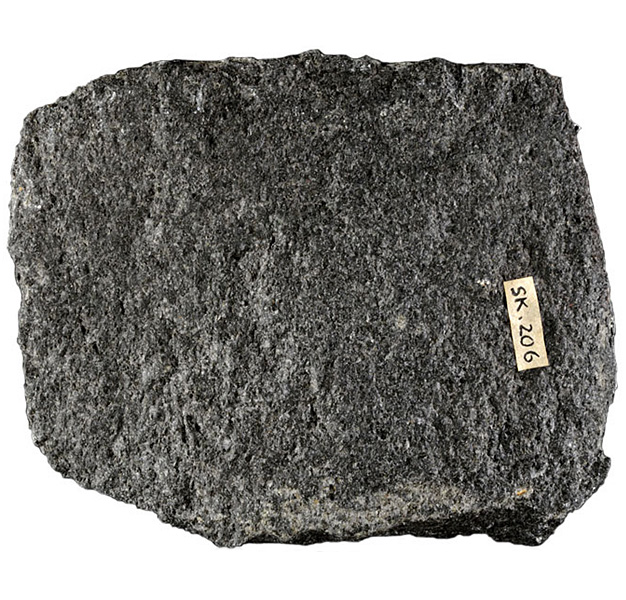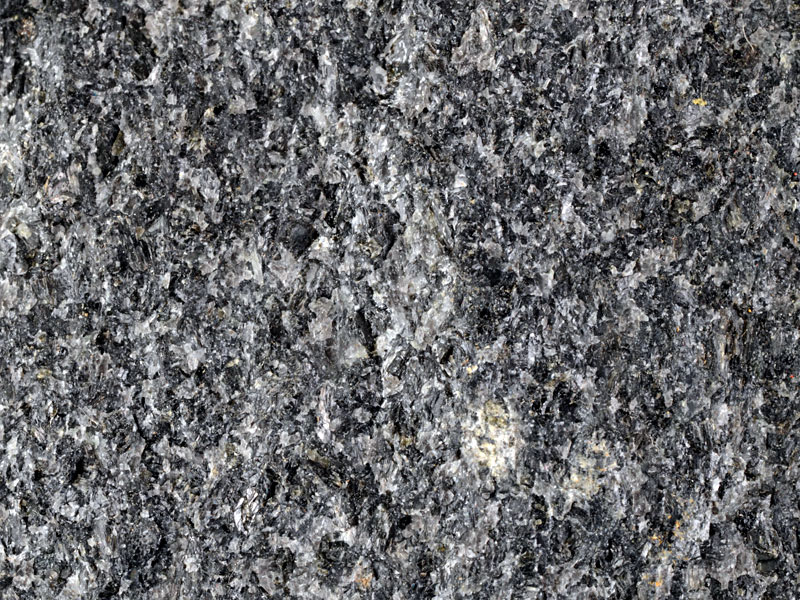
Fact sheet
This coarse-grained igneous rock is a gabbro. The plagioclase-rich plutonic rocks from this locality were once known as eucrites, but that term has been replaced by bytownite gabbro since 'eucrite' is a term now reserved for meteorites thought to originate from the surface of the asteroid Vesta. The rock sample comes from The Cambir in the north west corner of St Kilda, which is an ancient volcano formed in the Paleogene period during the eruption of the North Atlantic volcanic province. The heart of the now eroded volcano is all that is visible above sea level. The island was continuously inhabited for two thousand years until 1930, when the remaining inhabitants of the main island were evacuated to the Scottish mainland. The island is now a world heritage site for natural and cultural study.
In thin section the rock contains strongly cleaved and zoned pyroxene, olivine grains exhibiting cracking and alteration to a combination of chlorite and ilmenite, and bytownite (a calcic plagioclase), which gives the rock its name.
The United Kingdom Virtual Microscope (UKVM) collection consists of igneous, sedimentary and metamorphic rocks from around the UK.
It is intended as a teaching resource, helping to tell the story of the common rock types and how they form, and reflecting the history of the UK at the margins of the continent of Europe. The collection is a series of teaching sets, for example igneous rocks from the North Atlantic Igneous Province and SW England; high-temperature metamorphic rocks from Scotland and low-temperature metamorphic rocks from Wales; and sedimentary rocks, including English limestones and sandstones.







